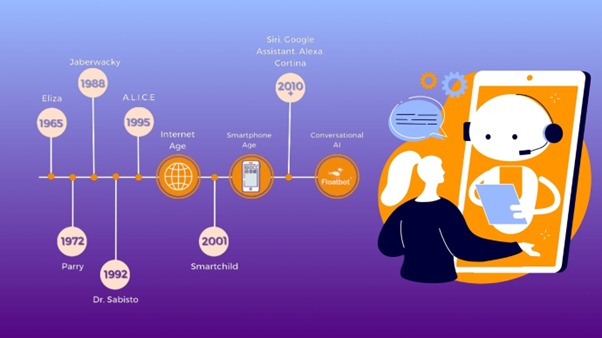The Rise of Chatbots: From Rule-Based Programs to Conversational Artificial Intelligence

These days, conversational interfaces are the center through which companies engage with customers. From customer service to sales, companies utilize chatbots for automated, instantaneous, and personalized efforts. As technology advances, it's also critical to understand how far chatbots have come by starting from the beginning to better appreciate them in the present day and forecast them for the future.
TABLE OF CONTENTS
1. The First Chatbots: ELIZA and the Birth of AI Conversations
The first chatbot was ELIZA which was developed in the 1960s by Joseph Weizenbaum, an MIT professor. ELIZA represented the earliest efforts to electronically communicate; ELIZA accepted participant input and matched responses based on predetermined scripting. Such foundations support today's powerful natural language processing (NLP) capabilities.
2. The Rule-Based Era: A Breach of Limitations
After ELIZA, there was PARRY and ALICE, bots with the same intent. These were rule-based bots that operated similarly to give the perception of chatting via fixed guidelines. Yet like ELIZA, PARRY and ALICE had a fixed script; they could not gauge their surroundings or learn over time. While they innovated their respective eras, maintaining a complex or non-linear discussion (or one that evolved over time) was difficult for these bots as well.
3. The NLP Takeover: Awareness of Human Language
By the late 20th century and early 21st century, natural language processing integrated new standards for the chatbot experience. Awareness of human language became increasingly standard. Scripting was no longer necessary to the extent it once was; now, chatbots could process language better. This increased fluidity of conversation allowed chatbots to answer more questions and give more relevant answers.
4. New Developments in AI and Machine Learning with Chatbots
This generation of chatbots comes from the development of AI and machine learning. They can learn from conversations, adapt to user patterns and provide personalized experiences Projected value of the global chatbot market by 2030 is 27.3 billion.
5. Chatbots in Retail and E-Commerce: Transforming Customer Engagement
Chatbots are an excellent opportunity for retail and e-commerce for increased customer engagement. They can assist customers in locating products, answer questions instantaneously, and even process payment transactions. Studies show that companies enjoy better conversion rates and customer satisfaction due to successful integrations with chatbots.
6. The Future: Personalized, Contextual Conversational Agents
Chatbots of the future will communicate in a more sophisticated manner with a highly personalized, contextual conversation. When artificial intelligence continues to grow, bots will know your preferences, solve problems before questions are even asked and seamlessly integrate with all software and devices.
Summing Up
Embrace the Next Gen of Chatbots. The evolution from standard chatbot to next-gen chatbot that can humanize understand and respond capabilities mirrors the flourishing increase in development in AI and NLP. As companies have positioned themselves needing such systems to boost customer satisfaction rates, implementation of next gen chatbot solutions for the future is vital.
Acquire Jinn's AI-powered chatbot and enter the new wave of customer engagement. Get smart, empathetic conversations for your brand.






Share your thoughts